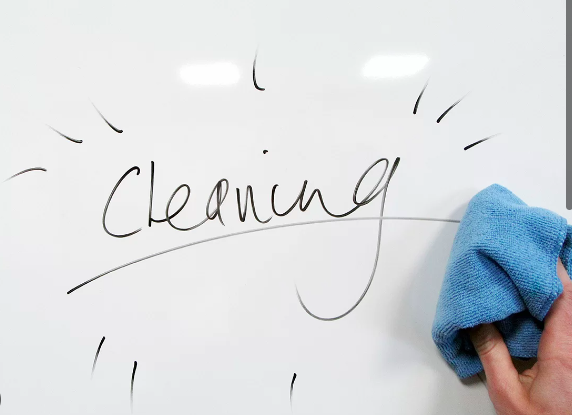
A whiteboard serves as an invaluable tool for capturing and sharing ideas, whether at home or in a professional setting. However, over time, it inevitably accumulates stains and marks, detracting from its pristine appearance. To preserve your whiteboard's clarity and functionality, establishing a regular cleaning routine using appropriate materials and methods is essential. Here are some simple tips and tricks to seamlessly maintain your whiteboard's cleanliness:
Identifying and Categorizing Stains Begin by identifying the types of marks and stains present on your whiteboard. Common culprits include ghosting from lingering dry-erase marker residue and more stubborn stains resulting from various sources. Distinguishing between these types of marks will guide your cleaning approach effectively.
Assessing Stain Age Consider the age of the stains, as fresher ones typically respond better to light cleaning methods. Prompt action can prevent stains from becoming deeply embedded and resistant to cleaning efforts.
Everyday Cleaning Regular upkeep is key to preserving your whiteboard's pristine condition. A daily wipe with a microfiber cloth or designated eraser can effectively lift dry-erase ink before it settles, particularly when using "ghost-free" or "low-odor" markers.
Selecting the Right Materials Choosing the appropriate cleaning materials is crucial to avoid damaging the whiteboard's surface. Opt for a high-quality microfiber cloth for gentle yet effective removal of dry-erase ink. Alternatively, melamine foam, commonly known as a 'magic eraser,' can tackle tougher stains with care. Felt erasers designed for whiteboards offer a softer approach and can often be used without additional cleaning agents. Avoid abrasive materials or harsh scrubbing tools to prevent permanent damage.
Homemade Cleaning Solutions For a natural and effective cleaning solution, consider mixing isopropyl alcohol and water or equal parts of vinegar and water. Adding a drop of dish soap to the vinegar solution enhances its cleaning power for tougher stains. Apply these mixtures with a soft, lint-free cloth to ensure thorough cleaning without leaving behind fibers.
FAQs on Whiteboard Cleaning
- To clean without leaving marks, use a water and vinegar mixture or a whiteboard cleaner solution.
- Household items like baking soda, toothpaste, or rubbing alcohol can be used for cleaning, but avoid abrasive materials and harsh chemicals.
- Clean your whiteboard regularly, ideally once a week for light usage or more frequently for heavy usage or stubborn stains.
- Alternative cleaning methods include baby wipes, magic erasers, or a damp cloth with a small amount of dish soap.
- Essential supplies for cleaning include water, vinegar or whiteboard cleaner solution, a soft cloth or whiteboard eraser, and optional items like baking soda or rubbing alcohol.
- While a regular eraser can remove some residue, a whiteboard eraser is recommended for optimal results.
- Old whiteboards can be restored with a whiteboard restorer or a mixture of water and baking soda, though severe damage may necessitate replacement.
- Avoid using glass cleaner on a whiteboard, as it can damage the surface. Use cleaners specifically designed for whiteboards or homemade solutions instead.
By following these guidelines and employing suitable cleaning methods, you can ensure that your whiteboard remains a reliable canvas for capturing and sharing thoughts and ideas, maintaining its clarity and functionality for years to come.